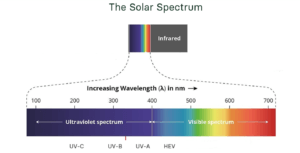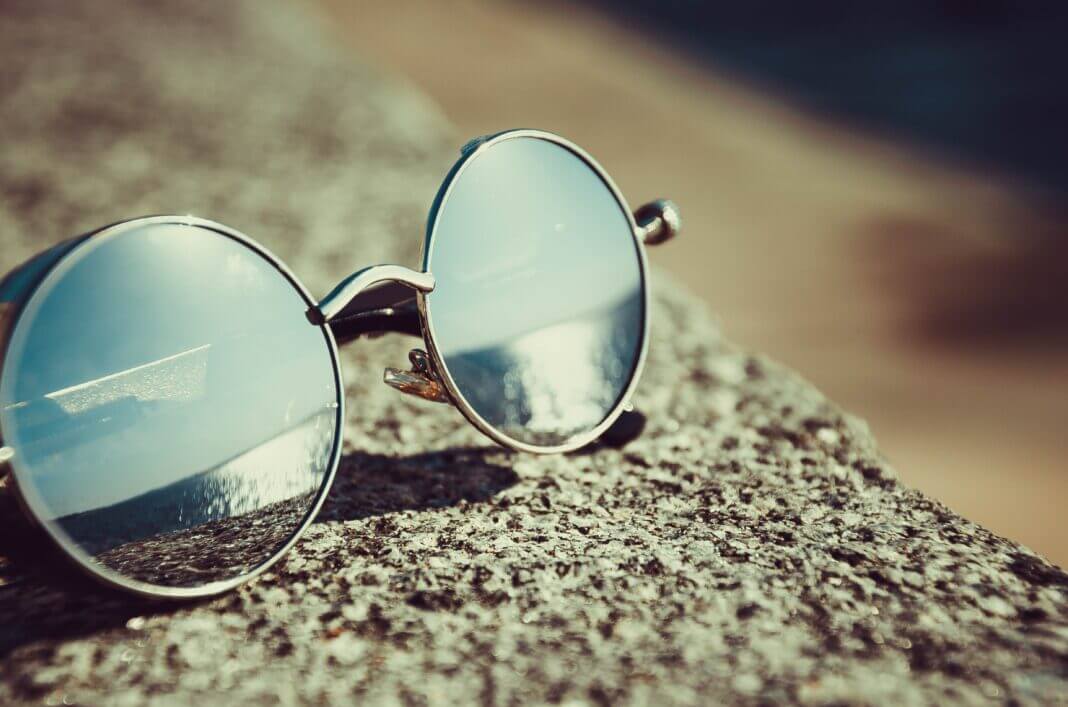To hear more, follow us on our social media channels.
Instagram| Facebook |Twitter | LinkedIn
Chronic skin damage induced by ultraviolet (UV) radiation is the primary cause of most skin cancers, although increasing evidence suggests excessive exposure to high energy visible (HEV) light is also a partial contributor. UV radiation is a form of energy emitted from the sun and manmade sources including tanning beds and certain light bulbs. Solar UV radiation can be subdivided into three main wavelengths: UVC (in the range of 210 to 280 nm; filtered out by the ozone layer) UVB (in the range of 280-310 nm) and UVA (in the range of 310-400 nm).

The shorter wavelength UVB penetrates the outermost layers of our skin (epidermis). It is more energic than UVA, meaning its rays are much more damaging. UVB can directly cause sunburn (skin cell death) and mutate our cells- leading to skin cancer. UVA light, penetrates deeper, reaching the inner layer of our skin (dermis) and damaging the structural components of our skin, such as collagen and elastin, and causing photoaging (wrinkles and sagging). More recently we have begun to understand that UVA is also a mutagen like UVB. Therefore, protection from UVA and UVB is vital to reduce the risk of skin cancer.
The best way to reduce your risk of skin cancer is to adhere to a regular regime of skin photoprotection (protection from UV and light) before the skin is exposed to UV light, regardless of skin type and even on cloudy days.
Photoprotection
Protecting skin from UV light involves both avoiding the sun at times of higher risk and using barriers such as clothing and sunscreens to protect skin from UV damage.
Sun Avoidance
During the middle of the day, the sun is at its peak and the intensity of UV radiation reaching the earth is much greater than during the early morning or late evening. The World Health Organization (WHO) recommends limiting exposure to sunlight during the hours of 10 am-4 pm; advice backed by most national sun safety programs.
UV can be reflected by certain surfaces including water, snow and concrete. Reflected UV light still contributes to skin damage explaining why people still suffer from sunburns despite hiding in the shade.
Sunscreens
Sunscreens and clothing can provide adequate protection from UV damage if used correctly. In general, sunscreen should be at least SPF 30+ and be broad-spectrum: providing protection from both UVA and UVB.
Correct sunscreen use is vital to be truly effective in preventing sun damage. Research has suggested that most people only use 25-50% of the recommended amount of sunscreen (approximately one teaspoon per extremity: arms, legs, face). Many makeup products such as foundation offer built-in SPF, however, it is estimated that seven times the normal amount of product is needed to provide adequate protection. Sunscreen should be applied at least 20 minutes before sun exposure and reapplied at least every two hours; more frequently if swimming or sweating.
Clothing
Tight weave clothing covering the arms and legs, and broad-brimmed hats, provide an important physical barrier between the skin and sunlight. Specific clothing with ultraviolet protection factor (UPF) ratings can be bought. UPF measures clothing’s ability to reflect, refract or absorb both UVA and UVB as a standardised, numerical rating. A UPF rating of 50 means that only 1/50th (or 2%) of the UV light can penetrate the fabric. Like sunscreen SPF, UPF ratings are affected by water, so clothing should only form part of a photoprotective regime, particularly when swimming.
Clothing colour has also been shown in research to affect the UPF of fabric with darker colours, particularly dark blue, providing greater protection to the skin than lighter colours, such as yellows and whites.
Most government health agencies also recommend the use of wrap-around, polarized sunglasses to protect eyes from sun damage.
Medical check-ups
Regular skin checks from a physician or dermatologist, particularly for older individuals or those who have had large amounts of sun exposure, are vital to identify and remove precancerous lesions (such as actinic keratoses) and moles which may metastasize into skin cancers. Melanoma UK’s website provides basic information on how to perform a self-examination for skin cancer and the key signs of suspect lesions. For more, see Melanoma UK’s self check guidance.

